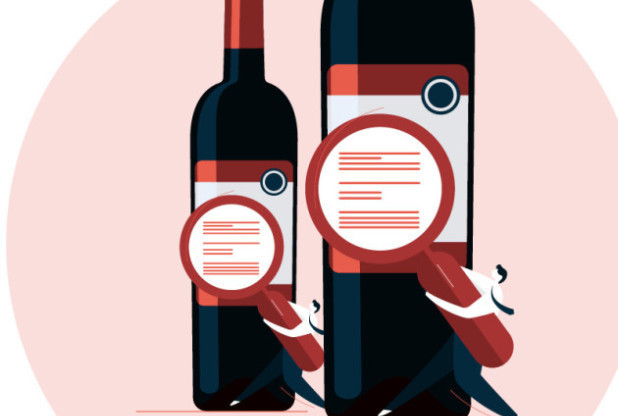Home People & Opinion
by Jerry Locksbyzer
Published: October 26, 2023
I realise this is a very dramatic title. But none of us should underestimate the changes the UK government intends to introduce to the wine industry from early 2024.
In case you missed it, the Department for Environment, Food and Rural Affairs is touting these changes as a boon for the wine trade after Brexit, allowing it to scrap 400 pages of restrictive EU rules for businesses in favour of a more flexible regulatory package with far greater freedoms over how wine is produced, bottled and labelled. The department says the changes will “drive investment, growth and jobs” in the UK wine industry. They also herald a complete overhaul of what can be sold as “wine”.
These changes come after a period of consultation with trade organisations, and have the support of the Wine and Spirits Trade Association, a body that has done a great job of representing the interests of the national trade to the government under the excellent leadership of Miles Bell. That may make everything look good. But alongside the unequivocally beneficial measures, including simplified labelling of imported wine, there are some potential market-changing consequences.
The most significant concern is the relaxation of rules on the import of wine in bulk for subsequent blending and bottling in the UK (the consultation also looked at sweetening, removing alcohol and adding carbon to such wines but this was not mentioned in the latest press release, so it remains unclear whether there will be changes).
The new rules appear to mean that UK wines can be blended with any other wine, whether imported or locally produced – different countries of origin, grapes or alcohol levels. The argument is that wines outside the UK can be blended with different origins – such as EU countries – so why not here?
It also appears that there will be no minimum amount of alcohol a wine must contain in order to be called wine, resulting in zero or nearly zero alcoholic “wine”.
If these scenarios become reality once the details are clear, the UK market could change dramatically – helped and encouraged by the already announced changes to the alcohol tax system, where lower-alcohol wines pay less tax than higher-alcohol ones. Here’s why.
The everyday segment of the wine-as-a-drink market is the largest of all. It is populated by consumers who shop with price and affordability in mind. This is the segment that these changes will affect most. Retailers will be able to make new “wine” products for this market, labeled as Pinot Grigio, Sauvignon Blanc, Shiraz, Malbec, or any other grape variety, at any alcohol level they choose, without specifying the country of origin. The apothecary lab is also important. The cheapest bulk wines can be taken and blended with something better, perhaps with added sweeteners, acidity, etc., to achieve a specific taste and price point.
Beyond the challenge for informal retailers of how to distribute these multi-origin creations on shelves segmented by country of origin, the new rules will provide enormous scope for new product development. This will not be the new wine as we know it today, but combined with sweetening, flavouring, carbonation and alcohol removal, it will lead to a boom in what we now know as wine-based drinks. Both generic grape varieties and product brands look set to become even more important than they are today.
Does it matter if we are heading towards a radical shift in our historical understanding of what wine is? I think the answer depends on who you are and where your business, cultural and personal interests lie.
For traditional wine lovers, natural wine lovers, small winegrowers, supporters of the concepts of soil, soul and place where wine is an expression of all these things, made by people with personalities and stories – yes, it is very important.
For consumers who don’t particularly care about the background of the wine they buy, but are looking for a flavorful drink they can afford and feel comfortable drinking, it may not matter at all—and it will be beneficial. More “wine-to-Coke” will give this consumer segment a greater choice of products.
I have to tell (re)tell my favorite story regarding the last point:
I was on a boat sailing down the Yangtze River in China in the early 2000s. A waiter came by and offered us all a complimentary glass of well-chilled champagne in a flute glass on deck. We were a diverse group of Chinese and international tourists, and everyone seemed happy with their champagne. Except that it wasn’t champagne. It was perry – a carbonated sparkling alcohol made from pears. There were no grapes in sight, and it was light years away from that famous region of France. Upon inspection, it was also packaged in a bottle with a mushroom stopper (albeit a plastic one) and an aluminum foil lid.
Did my fellow travelers care or know that this wasn’t real Champagne? Not at all. Did they know what real Champagne was? I have no idea, but I doubt it. What was clear was that everyone was enjoying their drink.
This story suggests to me that the changes ahead are likely to exacerbate a fundamental point in our trade – there is no single market for wine, no single type of wine drinker, but many wine drinkers. It would be foolish to treat them all equally.
These changes will open up new opportunities for UK winemakers and product developers; for wine producers and brokers who have huge stocks of cheap, unwanted wine; and for ordinary consumers looking for a drink that is affordable and in style – for whom I suspect the arcane arguments about how to define wine are irrelevant. And let’s not forget that rice wine, cider, rhubarb and many other varieties have been around for a long time too.
These changes are likely to make it more difficult for traditional wine producers of all types to maintain a presence, as new “wine” products are likely to take up a larger share of limited retail space, especially if they give retailers better margins and consumers buy them in larger numbers.
The UK government, of course, doesn’t care about the fate of other countries’ wine industries. However, it should care about the UK’s wine industry. For this, it might pay attention to Jamie Goode’s excellent article on his Wine Anorak blog in May. According to Jamie, the cheapest Canadian wines are now made from large quantities of imported wine mixed with a small amount of Canadian wine, often sold under the brand name of a well-known local producer. He notes that such wines now account for half of all grapes produced in Ontario and 58% of the wine sold there. This is a dilution of a national asset. Wine GB is for you.
But in adversity there is opportunity. The most effective way for the traditional wine industry to maintain its value to consumers is not to rely on regulation, but to do a very good job of making their product relevant to a large number of wine drinkers so that they can build a successful business. As good entrepreneurs, they will have to rely on themselves and no one else – by making real wine that people like, and marketing it vigorously and creatively.
Ironically, these new rules give real winemakers more scope to communicate the essence of what they offer by promoting their appeal over the fake tropes. And by telling the stories of people and places, they can make that the thing that sets them apart from the AI-less versions of ChatGPT.
The wine market has been bipolar for some time now. But we look at it from a different perspective, as the impact of these changes, along with those related to the alcohol tax, seems likely to enhance the process.
We should be aware that the WA Association is not oblivious to these dangers. As Harper's noted:
“The WSTA has confirmed its intention to work with the Government in the coming weeks and months to agree labelling rules that ensure consumers are informed about the wine and wine products they are purchasing.”
Should this reassure us? Unfortunately not. Relying on the small print on labels is pointless. One industry expert with decades of consumer research experience told me that they estimate that less than 10% of people read labels at the point of purchase; and those who do are mostly upper-class—and therefore not likely to buy freshly made “wine.” Even if the information was on the front label, my hunch is that most shoppers wouldn’t understand the terminology, and if they did, they probably wouldn’t care. They’re more likely to buy based on appearance, price, and taste, not the product’s rating.
The terms of the UK wine market look set to change dramatically. It might be wise to start strategic planning now.
Jerry Lockspeiser is donating his fee for this piece to The Running Charity, which works with homeless young people in the UK.


